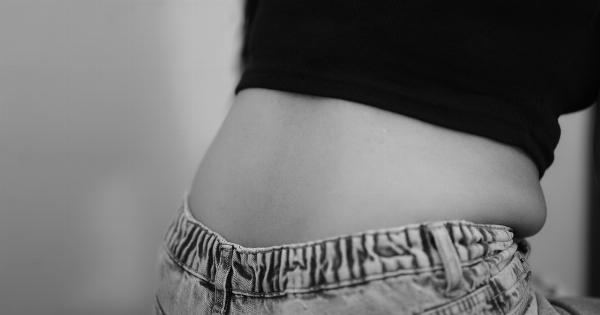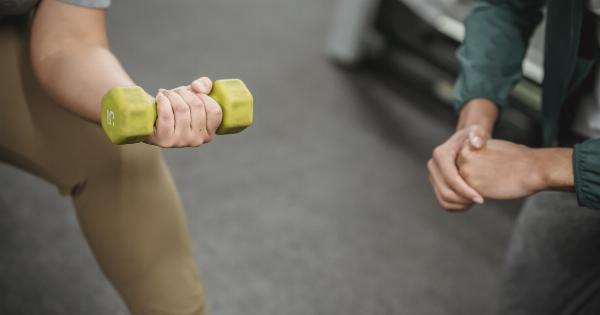Incontinence, or the involuntary loss of urine or feces, is a common condition that affects millions of people around the world. It can take a toll on your quality of life and cause embarrassment, discomfort and even shame.
Fortunately, incontinence can be managed and even cured with the right treatment and lifestyle changes. In this guide, we’ll take a look at the types of incontinence, the causes, the symptoms, and the best ways to overcome it.
Types of Incontinence
There are several types of incontinence, each with its own causes and treatments. The most common ones are:.
Stress incontinence
Stress incontinence is characterized by small leaks of urine caused by pressure on the bladder. It is commonly triggered by activities like coughing, sneezing, laughing, or lifting heavy objects.
Women are more prone to stress incontinence than men, especially after pregnancy and menopause. Treatment options include pelvic floor exercises, lifestyle changes, and surgery.
Urge incontinence
Urge incontinence, also called overactive bladder, is a sudden and intense urge to urinate that is difficult to control.
People with urge incontinence may need to use the bathroom frequently, including at night, and may experience accidents if they are unable to reach a toilet in time. Causes include bladder irritation, nerve damage, and certain medications. Treatment options include bladder training, medication, and surgery.
Overflow incontinence
Overflow incontinence is when the bladder becomes too full and leaks urine. It is common in men with prostate problems and can also be caused by nerve damage, medications, and other medical conditions.
Symptoms include dribbling urine and a weak urinary stream. Treatment options include catheterization, medication, and surgery.
Causes of Incontinence
Incontinence can have many different causes, including:.
Age
As we age, the muscles and tissues that support the bladder can weaken, leading to incontinence.
Pregnancy and childbirth
Pregnancy and childbirth can change the structure and function of the pelvic floor muscles, leading to incontinence.
Prostate problems
Enlarged prostate or prostate cancer can interfere with bladder function and cause incontinence.
Neurological disorders
Conditions like Parkinson’s disease, multiple sclerosis, and spinal cord injuries can affect nerve signals to the bladder and lead to incontinence.
Medications
Some medications can increase urine production or relax bladder muscles, leading to incontinence.
Obesity
Excess weight can put pressure on the bladder and weaken pelvic floor muscles, causing incontinence.
Symptoms of Incontinence
The symptoms of incontinence vary depending on the type and severity of the condition. They may include:.
- Urine leakage, either a small amount or a full bladder
- Strong urge to urinate that is difficult to control
- Frequent urination, including waking up at night to use the bathroom
- Dripping urine after going to the bathroom
- Difficulty starting to urinate or maintaining a steady stream
- Feeling of incomplete emptying after urination
Diagnosing Incontinence
Diagnosing incontinence usually involves a physical exam, medical history, and some tests. Your doctor may:.
- Ask about your symptoms and when they started
- Review your medical history and medications
- Perform a pelvic exam to check for any abnormalities or weakness in the pelvic floor muscles
- Test your urine for signs of infection or other problems
- Perform a cystoscopy, which involves inserting a thin tube into the bladder to look for any abnormalities or blockages
- Conduct a neurological exam to check for any nerve damage
Treating Incontinence
The treatment for incontinence depends on the type and severity of the condition, as well as the underlying causes. In general, treatment options include:.
Pelvic floor exercises
The pelvic floor muscles support the bladder and other organs. Strengthening these muscles can help reduce incontinence. Kegel exercises, which involve contracting and releasing the muscles, are a common way to strengthen the pelvic floor.
Your doctor or physical therapist can provide guidance on how to do these exercises correctly.
Bladder training
Bladder training involves learning to control and schedule urination. This can help reduce the frequency and urge to go to the bathroom.
A typical bladder training program involves gradually increasing the time between bathroom breaks, using relaxation techniques to control the urge, and keeping a bladder diary to monitor progress.
Medications
Some medications can help treat incontinence by reducing bladder contractions, increasing bladder capacity, or relaxing muscles. However, medications can have side effects and may not work for everyone.
Surgery
In some cases, surgery may be necessary to treat incontinence. For example, surgery can be done to tighten the muscles around the bladder or to correct any structural problems.
However, surgery is generally considered a last resort and is usually only recommended if other treatments have failed.
Lifestyle Changes for Incontinence
In addition to medical treatments, there are several lifestyle changes that can help manage incontinence:.
Dietary Changes
What you eat and drink can affect your bladder. Avoid caffeine, alcohol, and acidic foods, all of which can irritate the bladder and increase urine production. Drinking enough water is also important to keep your bladder healthy and prevent infections.
Weight Loss
If you’re overweight, losing weight can help reduce pressure on the bladder and improve pelvic floor muscle strength.
Quit Smoking
Smoking can irritate the bladder and increase the risk of incontinence. Quitting smoking can improve your overall health and help reduce incontinence.
Stay Active
Regular exercise can improve bladder control and strengthen pelvic floor muscles. Aim for at least 30 minutes of exercise a day, such as walking, swimming, or yoga.
Conclusion
Incontinence can be a frustrating and embarrassing condition, but it is treatable and often curable. By understanding the causes, symptoms, and treatment options, you can take steps to manage and overcome incontinence and improve your quality of life.



























